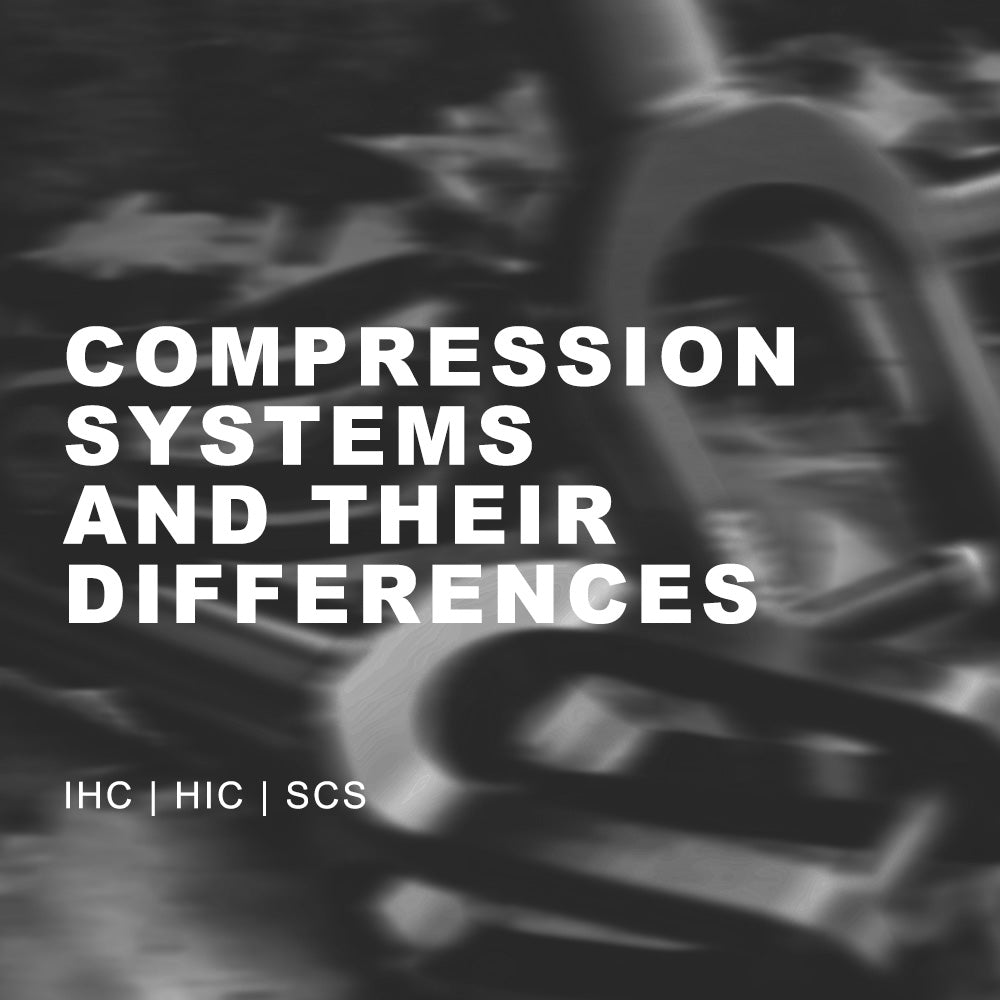🛠️ What Is Scooter Compression—and Why It Matters
Compression systems hold together your scooter’s deck, fork, and handlebars. They ensure your setup stays tight yet spins smoothly—critically important when landing jump tricks or grinding rails. Choosing the right system enhances performance, compatibility, and decking longevity.
Compression System Breakdown
1. IHC (Integrated Headset Compression)
-
How It Works: Uses a slim ring and 6 mm bolt in the fork to compress the headset internally. Bars with a slit clamp down over it.
-
Best For: Park riders who value reduced weight and easy tuning.
-
Pros & Cons: Lightweight and quick to install; less durable under extreme stress
2. HIC (Hidden Internal Compression)
-
Overview: A beefed-up version of IHC for oversized bars.
-
Best For: Riders using oversized handlebars who need strong but simple systems.
-
Pros & Cons: Balanced between strength and weight; slit can weaken bars over time
3. SCS (Standard Compression System)
-
Overview: Industry-standard clamp system favored for street riding .
-
How It Works: A four-bolt clamp connects fork and bar; bars must be unslit or use SCS-only adapters.
-
Best For: Advanced riders doing heavy-duty tricks.
-
Pros & Cons: Extremely robust and reliable; heavier, requires precision installation.
⚙️ Compatibility & Upgrade Guide
-
Bar types:
-
Slit bars → compatible with IHC or HIC only.
-
Unsilt/oversized bars → required for SCS.
-
-
Adapters & shims:
-
SCS adapters convert slit bars for SCS use.
-
Ensure shim length matches fork exposure.
-
-
Fork compatibility: Use forks specific to IHC, HIC, or SCS systems—mismatches may cause failures.
📋 Side-by-Side Comparison
| Feature | IHC | HIC | SCS |
|---|---|---|---|
| Bar Type | Slit standard | Slit oversized | Unsilt or via adapter |
| Weight | Lightest (~lowest stack) | Moderate | Heavier (+ clamp) |
| Strength | Good for park tricks | Robust for most riders | Superior for street & pro use |
| Ease of Setup | Simple | Simple with correct parts | Complex, torque-sensitive |
| Ideal Rider | Park/Beginner | Intermediate/oversized bar user | Advanced/street riders |
✅ Choosing the Right Compression System
-
Assess your bar: Slit → IHC/HIC; Unsilt/oversized → SCS likely best.
-
Evaluate your riding:
-
Park/tricks? IHC is lightweight and efficient.
-
Oversized bar fan? HIC balances strength and simplicity.
-
Street or high-impact tricks? SCS is the most durable picker.
-
-
Plan for upgrades: SCS gives maximum options but is the priciest and heaviest.
🧠 FAQs: Compression System Essentials
1. Can I swap IHC for SCS later?
Yes—but you’ll need a new clamp, compatible fork, and likely a shim or adapter.
2. Are slit bars compatible with SCS?
Not without modification—either removing the slit or using an SCS bar adapter .
3. Why does SCS weigh more?
The metal SCS clamp and extra hardware add noticeable weight—but gains in strength
4. What if I mix systems incorrectly?
Mismatches, like using HIC in an SCS fork, can cause failures or unsafe setups.
5. Can I do tricks with IHC?
Yes! IHC is park-friendly, but for street-style intensity, many riders eventually move to HIC or SCS.
🎯 Final Takeaway
-
IHC = light + easy — perfect for park and beginner setups.
-
HIC = stronger + still user-friendly — ideal with oversized bars.
-
SCS = most robust — essential for heavy street use and customization.
Pick the system that suits your bar type and riding goals—and ensure all parts match for safe, smooth rides.



Leave a comment
This site is protected by hCaptcha and the hCaptcha Privacy Policy and Terms of Service apply.